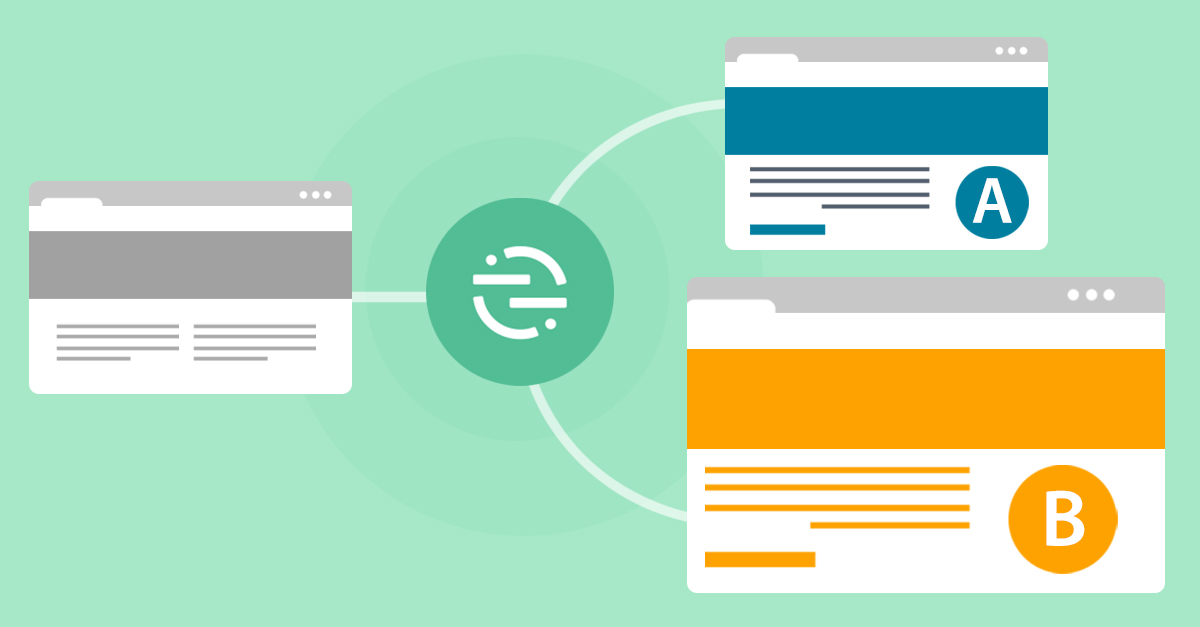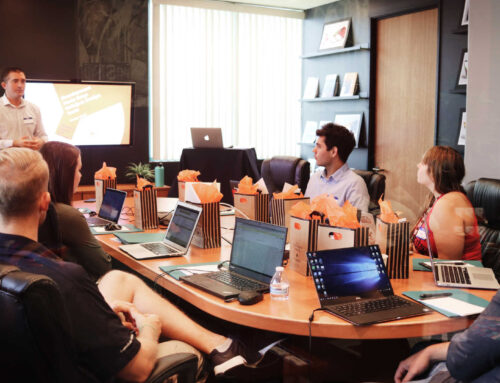Segment is a very popular CDP (customer data platform) that specializes in unifying data sources in real-time across your digital touchpoints and with your ever growing marketing technology stack.
Segment is an especially popular choice with product and engineering teams because it can serve as the organization’s centralized hub for data collection, integration, and syndication. And what really makes Segment so powerful is its 300+ API integrations with top marketing technology platforms.

This has resulted in Segment becoming the foundational data platform for thousands of organizations that now use this unified data to power a variety of business use cases throughout their entire marketing stack and across their digital touchpoints.
Today we are going to do a deep dive on delivering site personalization using Segment data. This can be accomplished through the FunnelEnvy’s Segment integration which makes it easy for Segment customers to test, target, and personalize user journeys using all of that rich user and event data in real-time.
Activating Segment Data with FunnelEnvy
Segment is one of the out of the box integrations that come with the FunnelEnvy Platform.
The first step to activate the integration is to select Segment as a Data Source within the FunnelEnvy Platform.

Next, copy the API Key displayed in the integration details, check the “Active” checkbox and save the integration.

The Segment integration will be listed as active and FunnelEnvy will now start tracking identify calls and associated traits from Segment.
The last step is to configure FunnelEnvy as a new Destination within the Segment Platform. In Segment search for and add FunnelEnvy as a destination.

In the settings you’ll need to add the API key that you copied from the FunnelEnvy platform when you activated Segment integration.

Save the destination and you’re done. Identify calls and track events and associated traits/properties will start flowing from Segment to FunnelEnvy.
That’s it! The FunnelEnvy and Segment integration is now ready to go. If you want to also set up FunnelEnvy as a data source for Segment (Segment as a FunnelEnvy destination) you can follow the steps outlined at the bottom of this help guide. This step is useful for syncing FunnelEnvy audiences with Segment and tracking which FunnelEnvy campaigns and experiences a user is associated with.
Now that we are up and running and sending our Segment data to FunnelEnvy, let’s explore a few popular personalization use cases.
Popular Personalization Use Cases With Segment Data
The most exciting use cases with using Segment data for personalization is the ability to deliver targeted 1:1 experiences based on the user’s relationship with you and serving the most relevant offers for them.
The exciting promise of CDP’s like Segment is they contain your best data view of your users and customers. Now by integrating Segment with FunnelEnvy we can target your users in a more personalized way and present them the best offers and experiences to drive better business outcomes.
Let’s look at how to set up a few of these personalization use cases in FunnelEnvy.
Personalizing for Existing Customers
The majority of websites are static and prioritize the site experience for that new visitor or prospect. This is the right strategy for growth but it results in a suboptimal user experience for our most valuable audience, existing users and customers.
Common sense tells you that if you can, you should personalize the site experience for your existing customers that may be coming back to your site frequently to login and use your products and services.
In this client example, we have a SaaS business where users must login to the website to access their services. Because this client tracks active logins in Segment we can easily personalize the site for this user audience.
Once the Segment integration is activated you can create new conditions, audiences, or goals based on any combination of Segment data. To begin, just create a new condition and select Segment as your data source.

In the below screenshot we will create a new condition in FunnelEnvy based on the user being an active user based on Segment data. In the drop down I can pick from any and all Segment data being passed to the FunnelEnvy Platform. In this case, I select the “Is Active User?” attribute and specify it must be true.

Once created, this new condition can be used to build targeted audiences that I can then use to personalize content to existing customers. My newly created Active User audience can now be easily applied to any of our A/B, predictive, and rules based campaigns, like in this example below:

I can now target active users with personalized customer content the next time they return to my website to login.
We can create simple audiences like in the example above or we can create more advanced audiences that combine multiple attributes from Segment and other data sources. In this example below, I am creating an audience based on the user being an active user AND has viewed our resource content section based on their onsite browsing behavior.

And the best part is that I can set the audience to automatically sync with Segment as one of FunnelEnvy’s data source destinations.
Use Next Best Offers to Convert More Prospects into Customers
Another great use case with personalization is the idea of serving your prospects the next best offer based on where they are in their buyer journey and based on what offers they have already activated.
While this is a very straightforward campaign in your email nurture campaigns, it’s often hard to execute on your website in real-time. Because of this challenge, most sites continue to show the same offer over and over again to prospects even if they already signed up for that offer. The end result is another missed opportunity to provide a more engaging experience to another high value audience, active prospects.
Luckily, this challenge is easily solved, and is just another straightforward site personalization use case when you pair Segment data with the FunnelEnvy Platform.
For this client, a product demo is the most popular entry offer for new prospects, but once they watch a demo there are a number of other offers that can help move the deal forward. They have webinars, calculators, and case studies that all work well as offers in the middle and bottom of the buyer journey.
In this example below we want to target active prospects who have completed a demo. Our client tracks in Segment which users complete a demo based on a Registered for Demo attribute. That allows us to easily create conditions and audiences based on the user being in the demo stage, like in the condition screen below.

With a few clicks we have created an audience of all site visitors that have completed a demo. We can now target our homepage banner to run a personalization campaign that will predict the next best offer for that active prospect from a collection of their top offers.
This is another example where instead of presenting an irrelevant offer, we can provide a more relevant experience and personalize the next best offer for our valuable active prospect audience.
Make Better Real-time Personalization and Attribution Decisions
The first two personalization use cases I shared focused on creating very specific audiences based on user stage data coming from Segment. Our last use case is focused on leveraging all of that rich Segment data to make better personalization decisions and to measure the attribution impact on revenue.
If your Segment implementation is typical of most of our clients, you likely have dozens if not hundreds of data attributes about your users coming from your customer databases, transaction systems, and various other marketing platforms. Typically, Segment has the richest and most accurate real-time data profile for your users, especially when it comes to revenue data.
For example, did that trial user successfully convert into a paid user 30 days later and generate revenue? How much revenue has that user generated over their customer lifetime?
Going back to our previous SaaS client example, they have a service that you typically start as a trial, and they can generate revenue from that user from both a monthly subscription fee and from specific actions they take in their account. In this case, the client tracks all revenue activities for a user with a Segment event named Generated Revenue.
Because all Generated Revenue for a user is tracked within Segment we can easily build a goal in the FunnelEnvy platform that will update whenever that Segment event fires and populate with the actual revenue generated from that event.
Since Segment track events become FunnelEnvy events, they can be used for goal tracking like any other event in our platform.
In the example below, we are setting up a new goal in FunnelEnvy that fires each time the Segment track event named Generated Revenue fires.

In real-time, every time that Segment track event fires we are now tracking that revenue and associating it back to the user and personalized experience they saw.
With this data flowing back to use in real-time we can now unlock two powerful capabilities.
Predicting Better Experiences to Maximize Revenue
Because we can track the total revenue a user has generated we can now start using that data to predict which personalized experience generates the most revenue for the business, not just the most trials or initial orders.
The FunnelEnvy personalization platform uses machine learning to predict which experience will perform best for an individual based on that user’s profile and on the history of how similar users converted on those same experiences.
This allows us to take advantage of all the data we have as the FunnelEnvy platform will predict and promote those experiences that maximize generated revenue for each user.
So in this case Segment data helps us convert more visitors to higher revenue generating experiences, all without the manual hassle of pre-defining segments or personalization rules. We let machine learning crunch all the data and predict the best experience for each user, all in real-time.
Better Attribute Incremental Revenue to Personalization
While generating more revenue is always priority one, as marketers we also need to demonstrate that our programs and campaigns are working and providing strong ROI.
In our example with the Generated Revenue event, in addition to making better predictions, we can also clearly demonstrate the impact on the revenue we are creating through our personalization initiatives.
With our integration with Segment, we are able to credit and report on how much revenue our personalization activities are generating and which personalization experiences covert best. We can then show incremental revenue by running a controlled A/B test that serves half the audience the control experience and the other half the predicted experiences. We then measure the difference between the two groups and report on uplift in conversion and value per visitor and calculate statistical significance.


With the Segment integration, it is now much easier to measure and demonstrate the incremental value of personalization. Not just on the initial order, lead, or trial but on customer lifetime value (CLTV).
This can all be done in real-time right out of the FunnelEnvy Reporting UI without any ongoing support from your IT or data team and without having to wait for delayed manual reporting.
As a marketer, you can finally focus on optimizing your personalization strategy without all the data and operational headaches. Wouldn’t that be nice.
As you can see, integrating Segment data into your personalization program is very straightforward and can unlock some very valuable capabilities and use cases.
If you’re not yet using FunnelEnvy but are interested in personalizing your website using Segment data we’d love to hear from you! You can contact us here: https://www.funnelenvy.com/contact/






